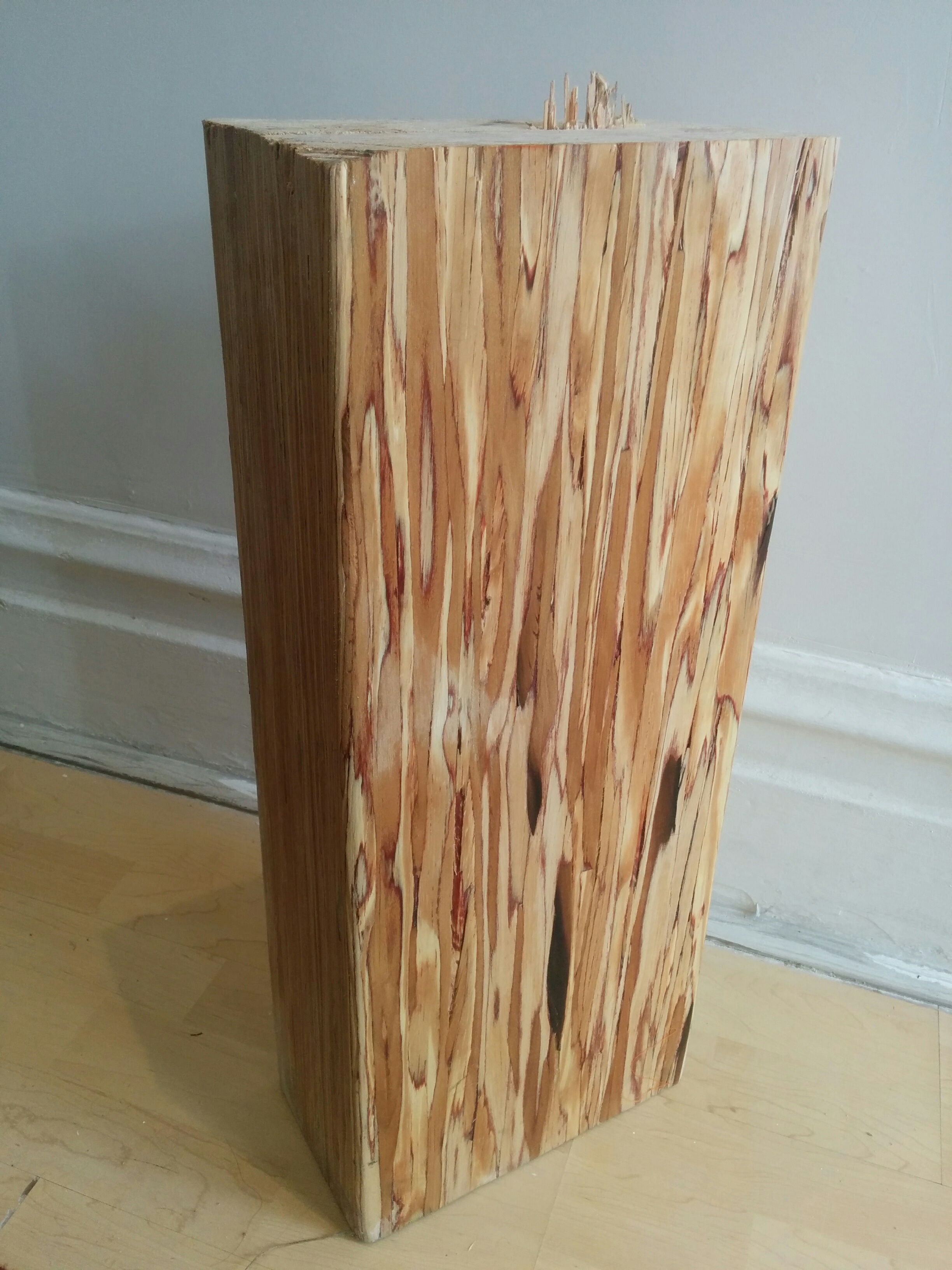Parallel strand lumber on:
[Wikipedia]
[Google]
[Amazon]
 Parallel-strand lumber (PSL) is a form of
Parallel-strand lumber (PSL) is a form of
File:Parallam side view.jpg, PSL grain from the side
File:Parallam support beam.jpg, A beam of PSL installed in an apartment
File:Parallam Parallel strand lumber in appartement.jpg, An apartment with an exposed PSL beam and column
 Parallel-strand lumber (PSL) is a form of
Parallel-strand lumber (PSL) is a form of engineered wood
Engineered wood, also called mass timber, composite wood, man-made wood, or manufactured board, includes a range of derivative wood products which are manufactured by binding or fixing the strands, particles, fibres, or veneers or boards of woo ...
made from parallel wood strands bonded together with adhesive
Adhesive, also known as glue, cement, mucilage, or paste, is any non-metallic substance applied to one or both surfaces of two separate items that binds them together and resists their separation.
The use of adhesives offers certain advant ...
. It is used for beams, headers, columns, and posts, among other uses. The strands in PSL are clipped veneer elements having a least dimension of not more than and an average length of at least 300 times this least dimension (around ). It is a member of the structural composite lumber (SCL) family of engineered wood products.
The design strength of PSL is greater than that of sawn lumber as the strands are glued together in a directional manner and under high pressure. This results in a much denser and stronger material. Because knots and other imperfections are randomly dispersed throughout the product (and filled up and fortified with glue) strength variability from one piece of PSL to another is less than in solid-sawn wooden beams. Since wooden construction materials are commonly graded to the lowest 5th percentile of the material's strength curve, PSL has much higher usable values for bending, tension parallel to grain, and compression parallel to grain.
''Parallam'' is the brand name for the product invented, developed, commercialized and patented by MacMillan Bloedel
MacMillan Bloedel Limited, sometimes referred to as "MacBlo", was a Canadian forestry company headquartered in Vancouver, British Columbia. It was formed through the merger of three smaller forestry companies in 1951 and 1959. Those were the Po ...
(now Weyerhaeuser
Weyerhaeuser () is an American timberland company which owns nearly of timberlands in the U.S., and manages an additional of timberlands under long-term licenses in Canada. The company also manufactures wood products. It operates as a real e ...
). It is the world's only commercially manufactured and marketed parallel-strand lumber product. PSL can be made from any wood species, but Douglas fir
The Douglas fir (''Pseudotsuga menziesii'') is an evergreen conifer species in the pine family, Pinaceae. It is native to western North America and is also known as Douglas-fir, Douglas spruce, Oregon pine, and Columbian pine. There are three va ...
, southern pine, western hemlock
''Tsuga heterophylla'', the western hemlock or western hemlock-spruce, is a species of hemlock native to the west coast of North America, with its northwestern limit on the Kenai Peninsula, Alaska, and its southeastern limit in northern Sonoma ...
, and yellow poplar
''Liriodendron tulipifera''—known as the tulip tree, American tulip tree, tulipwood, tuliptree, tulip poplar, whitewood, fiddletree, and yellow-poplar—is the North American representative of the two-species genus ''Liriodendron'' (the other ...
are commonly chosen because of their superior strength.
The product is manufactured as a or billet in a rectangular cross-section, which is then typically sawn and trimmed to smaller cross-sectional sizes. The beams are continuously formed, so the length of the beam is limited only to the maximum length that can be handled and transported. Typical widths are ; typical depths are . Typically the beams are made to a maximum length of .
References
Plywood Engineered wood MacMillan Bloedel Weyerhaeuser {{Architecture-stub